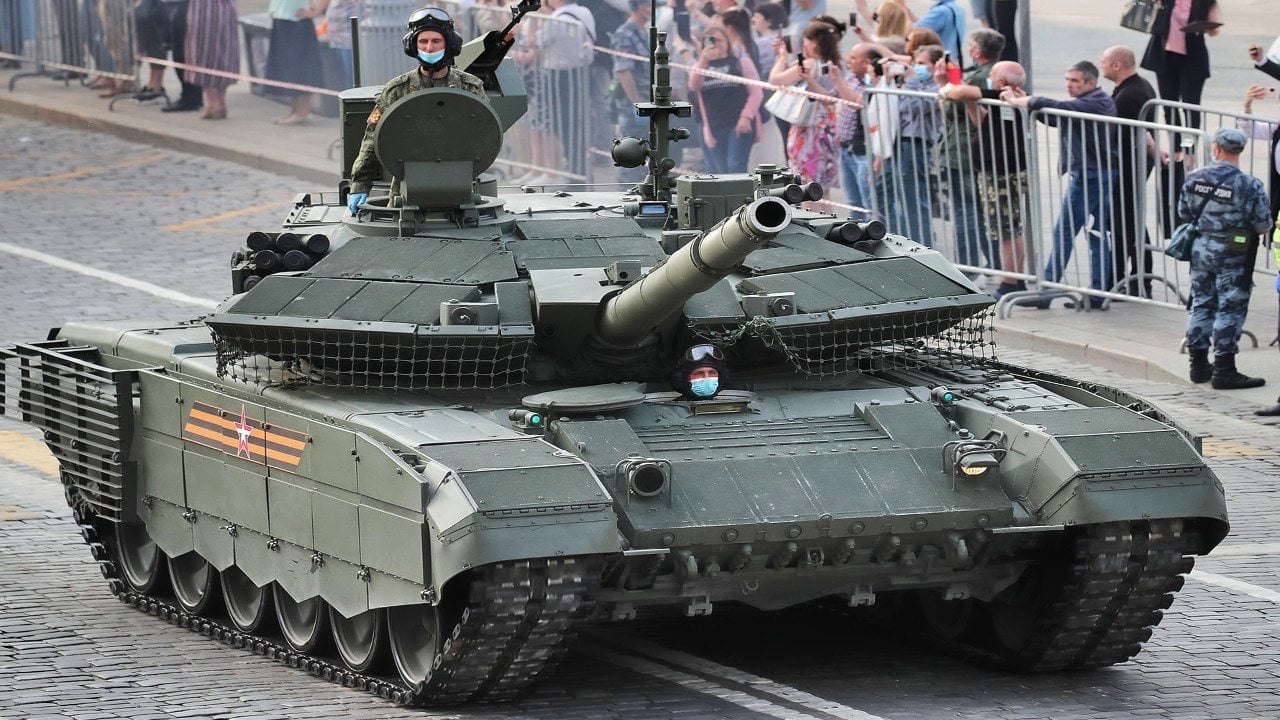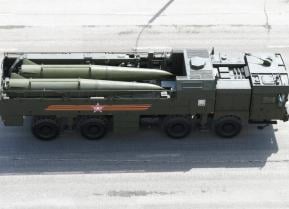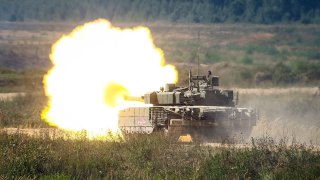Video Shows Russia's T-90 Tanks Getting Destroyed by Kamikaze Drones
Throughout the Ukraine conflict, Russia has suffered tank losses that many analysts consider staggering, given the perceived disparity in equipment, manpower, and training at the outset of the war.
The Russian invasion of Ukraine has resulted in some of the largest tank engagements since the Second World War.
Throughout the conflict, Russia has suffered tank losses that many analysts consider staggering, given the perceived disparity in equipment, manpower, and training at the outset of the war.
Many of these losses have not come during large tank engagements. Instead, they result from Russia’s apparent inability to conduct combined arms warfare.
Tanks may appear to be unstoppable machines, but when left unsupported by infantry, air cover, and artillery fire they are very vulnerable.
This video from the fall of last year shows one such tank, apparently alone on the road, being attacked by kamikaze drones.
T-90 Tank With Sandbag Armor
The tank showed in the video is a T-90M. This is one of the newer variants of the T-90, a line of tanks first introduced in 1992 and now serving as Russia’s main battle tank. Originally, the T-90 was designed to replace three tanks then in service with the Soviet armed forces: the T-64, T-72, and T-80.
Each of these tanks was created and manufactured by a different firm, leading to a huge logistical burden as almost none of their parts were interchangeable.
While the overall design of the T-90 is derived from the T-72, several upgrades have made it a capable, modern tank. The M variant was introduced in 2016 and has major advantages over previous designs. Its turret is welded instead of cast, increasing its armor capabilities.
Four cameras mounted on the exterior of the tank increase the commander’s situational awareness by providing a 360 degree view. An upgraded fire control system combined with enhanced gunner’s sights aid in engaging targets. Upgraded armor, to include explosive reactive armor, and infrared jammers increase the tank’s survivability. In all, the T-90 is an impressive machine.
These upgrades were apparently not enough for the crew, however, as the tank can be seen covered in sandbags. This form of up-armoring is as nearly as old as tanks themselves. There are many iconic photos of the Sherman tanks of the U.S. Army stacked high with sandbags, logs, spare tracks, and even concrete. The idea is that anti-tank rounds will detonate against the exterior armor instead of the steel of the tank itself, potentially saving the crew from what would otherwise be a deadly blow. In practice, however, most extra armor is only somewhat beneficial against slower rounds. Against modern, armor-piercing munitions, it is little more than ornamentation.
Introducing Kamikaze Drones
The current conflict in Ukraine is not the first drone war, but it has resulted in serious innovations in drone warfare. The video above is a good example of how first-person view drones are used in kamikaze attacks on Russian equipment. Drone teams usually operate by using one machine as a spotter, finding likely targets and guiding the attack drone in. Operators in Ukraine have become skilled at targeting the weak points on Russian vehicles. The attack in the video shows the drone striking the rear of the tank, a vulnerable location where the engine sits.
Russian Tank Losses
Russia’s loss of tanks is proceeding at an alarming rate. The T-90 is their mainstay tank. Only the T-14 Armata is more advanced, and this war has exposed it as a paper tiger. As the conflict has progressed, Russia has had to field older tanks that are not nearly as capable as the T-90.

Battlefield observers have spotted T-64s, T-72s, and T-80s, the three tanks the T-90 was meant to replace.
Earlier last year, analysts even saw a T-62, a tank that dates back to the 1960s.
#Ukraine: A Russian T-90M tank with "special" sandbag addon armour was hit by a FPV loitering munition of the Ukrainian 11th National Guard Brigade East of Oleshky, #Kherson Oblast- leading to the detonation of ammunition onboard and a turret toss. pic.twitter.com/g86gR4QHrw
— ???????? Ukraine Weapons Tracker (@UAWeapons) September 13, 2023
About the Author: Maya Carlin
Maya Carlin is an analyst with the Center for Security Policy and a former Anna Sobol Levy Fellow at IDC Herzliya in Israel. She has by-lines in many publications, including The National Interest, Jerusalem Post, and Times of Israel. You can follow her on Twitter: @MayaCarlin. Email the author: [email protected].
All images are Creative Commons.


